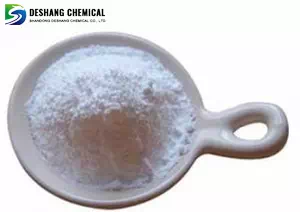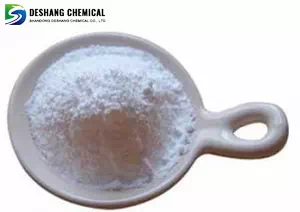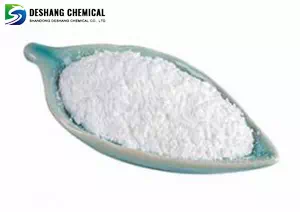All Categories



Imidacloprid CAS 138261-41-3, Imidacloprid, CAS 138261-41-3
Acidoline (CAS 138261-41-3), as the neonicotinoid insecticide with the highest global sales, its core value lies in:Efficient control of resistant pests: Unique neurotoxic mechanism, with a control efficiency of over 90% against piercing-sucking mouthparts pests.
CAS : 138261-41-3
Formula : C9H10ClN5O2
Mol. wt. : 255.66
EINECS : 200-835-2
| CAS | 138261-41-3 |
| Molecular formula | C9H10ClN5O2 |
| Molecular weight | 255.66 |
| EIENCS | 200-835-2 |
| Form | neat |
| Melting point | 144°C |
| boling point | 93.5°C (rough estimate) |
| Density | 1.54 |
| Solubility | 0.061 g/100mL at 20 ºC |
| PKA | 7.16±0.20(Predicted) |
| Color | / |
| Storage temp | 0-6°C |
Acidoline (CAS 138261-41-3), as the neonicotinoid insecticide with the highest global sales, its core value lies in:
Efficient control of resistant pests: Unique neurotoxic mechanism, with a control efficiency of over 90% against piercing-sucking mouthparts pests.
Multi-scenario application: Highly effective for seed treatment, leaf spraying, and soil treatment, with a long-lasting effect of up to 40 days.
Process greening: The dichloroethane solvent system achieves high yield (95.2%) and low pollution.
1. Mainstream route
Key intermediate: 2-chloro-5-chloromethylpyridine (CCMP).
Four-step reaction
Oxidation: 3-methylpyridine + H₂O₂ → 3-methylpyridine -N oxide (yield 90%);
Chlorination: N-oxide + phthalyl chloride → 2-chloro-5-methylpyridine (yield 76%);
Chloromethylation: SOCl₂ treatment → CCMP (yield 70%);
Condensation: CCMP + ethylenediamine + nitroguanidine → imidacloprid (yield 95.2%).
2. Breakthrough in clean processes
Solvent optimization: Dichloroethane replaces acetonitrile, reducing toxicity and making the solvent recyclable (reuse rate >80%).
Catalyst innovation: Tetrabutylammonium bromide enhances condensation efficiency, with a product purity of 99.2%.
1. Insecticidal mechanism
● Neurotoxin: Selectively binds to insect nicotinic acetylcholine receptors (nAChR), blocks neural signal transmission, and leads to paralysis and death.
● No cross-resistance: Unlike traditional organophosphorus and pyrethroid insecticides, it remains highly effective against resistant pests such as resistant aphids and planthoppers.
2. Application fields and preventive effects
● Target of prevention and control
○ Sucking pests: aphids, planthoppers, thrips, whiteflies (control efficiency >90%, long-lasting effect 25-40 days).
○ Other pests: Coleoptera (rice elephant beetle), lepidoptera (rice 螟虫) larvae.
● Application method:
○ Seed treatment: 1 g of active ingredients per kg of seeds, controlling cotton aphids and bean aphids for ≥5 weeks.
○ Foliar spray: 15-30 g/hm² (for rice planthoppers and wheat aphids), effective within 1 day after application.
○ Soil treatment: A soil concentration of 1.25 mg/kg for long-lasting control of cabbage and peach aphids.
Mammalian toxicity
●Acute oral LD₅₀ : 450 mg/kg in rats (low toxicity), non-irritating to the skin, and non-carcinogenic or teratogenic.
● Chronic toxicity: High doses can cause hepatocyte hypertrophy and testicular tissue lesions (in rat experiments), with an ADI limit of 0.057 mg/kg body weight.
Ecological risk
● Highly toxic to bees: Acute contact can cause death. The EU restricts its use during the flowering period.
● Aquatic organisms: Prawns are highly toxic (48h LC₅₀ 0.034 mg/L), while fish are slightly toxic (24h LC₅₀ >38 mg/L).
● Soil degradation: Half-life 4 to 11 days (red soil is the fastest), low residue but water source pollution should be avoided.
Protective measures
● Wear protective clothing and goggles when operating.
● Store away from food and feed, with a temperature below 30℃.
● Do not use 14 days before harvest. Use with caution in mulberry gardens or beekeeping areas
* Prompt reply and 24 hours online, professional team to provide best price and high quality product.
* Sample testing support.
* Every batch of products will be tested to ensureits quality.
*The packing also can be according the customers` requirment.
*Any inquiries will be replied within 24 hours.
*we provide Commerical Invoice, Packing List, Bill of loading, COA , Health certificate and Origin certificate. If your markets have any special requirements, let us know.